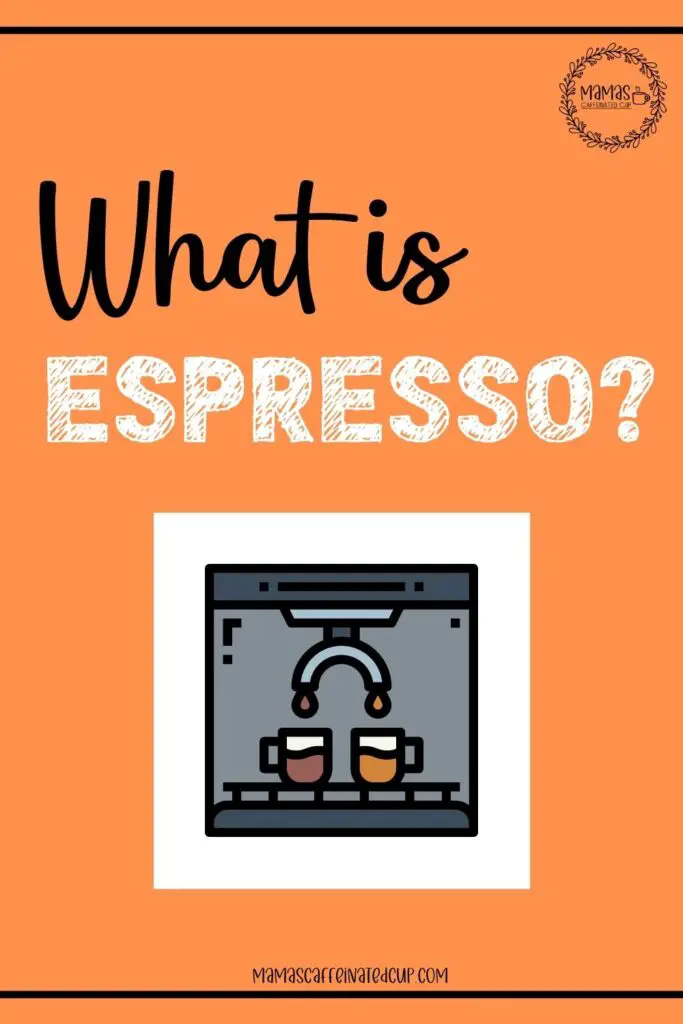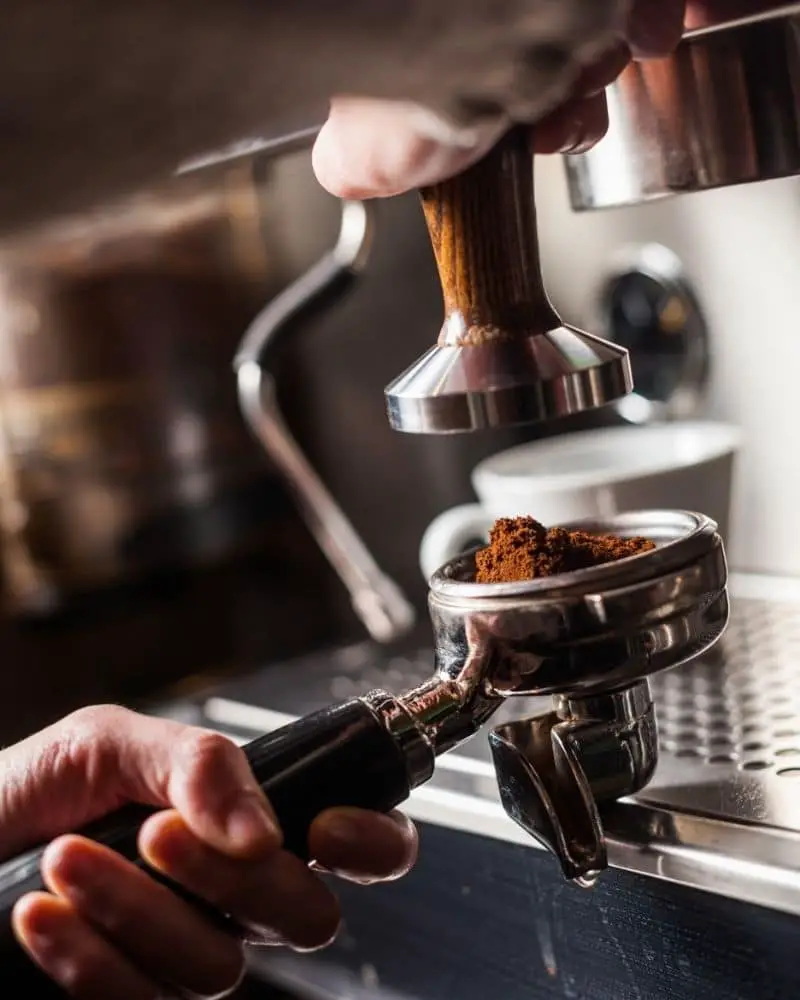Don’t feel bad, I asked myself that question once. I’m sure you have “heard of” espresso, but do you know what it really is?
Espresso is a brewing process. It’s not a type of bean or a certain roast. Many people often get confused because bags of beans in the grocery store will say they’re espresso but any bean can be used or the bags labeled that way can be brewed as regular coffee.
According to the Specialty Coffee Association, espresso is a 25-35 ml beverage prepared from 7-9 grams of coffee with clean water at 195°F to 205°F and forced through with 9-10 atmospheres of pressure with a grind of coffee that allows 20-30 seconds of brew time.
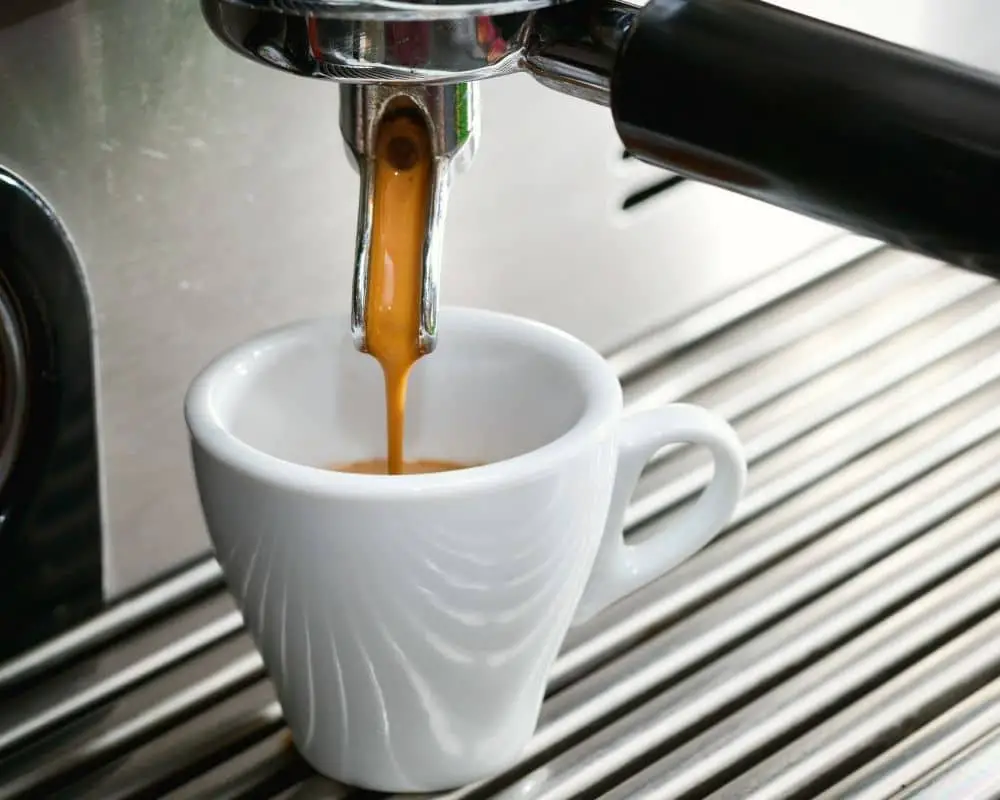
How Espresso Tastes
Many people think espresso is supposed to taste bitter. Don’t get me wrong, it can but it doesn’t have to.
Often, the reason espresso will taste bitter is that the beans being used to make it are burned and over-roasted or they aren’t fresh. If you use low-quality beans, you will get a low-quality espresso. The same is true for any other brew method.
Good espresso can taste sweet, fruity, floral, spicy, smoky, or other, depending on the bean you choose. Espresso can also be overwhelming to a newbie because of the intensity of the flavors.
If you are trying espresso for the first time, don’t give up now, you will need to try it a few times to get your taste buds accustomed to the intensity.
The acidity of the espresso is strong but balanced and it has a rich aroma. When brewed correctly, the sweetness will make it all feel balanced and it will have a velvety feel.
If you want to fully appreciate your espresso flavor, take a sip of water before to help neutralize your taste buds.
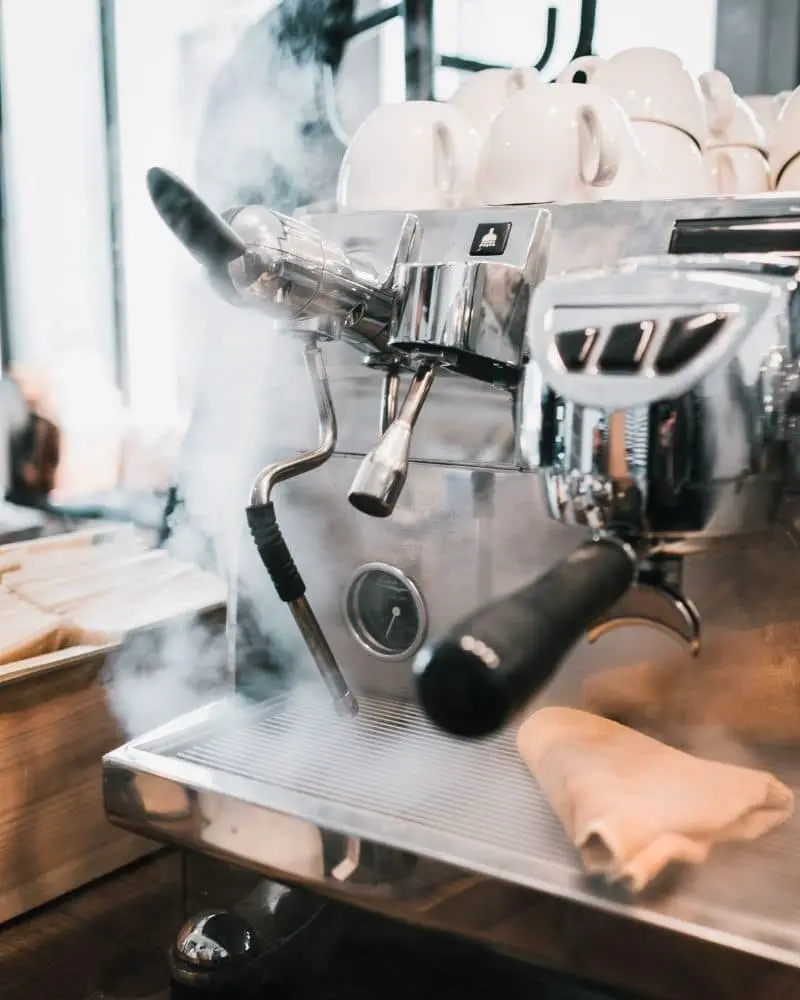
Pressure
The pressure is what makes the brew time short on an espresso. Like the Aeropress, the espresso relies on pressure instead of gravity or immersion to extract the grounds.
The pressure also helps the crema develop and the rich coffee oils to disperse into the shot. It’s what makes the brew time so short. The pressure allows the water to extract the bean faster.
Grind Size
Espresso needs a fine grind from fresh beans to make the coffee bed for the brew. It needs more surface area for the pressure and water to infuse with the beans.
You will want a fine grind that is similar to powdered sugar for brewing espresso.
If the grind size is too fine, you will end up with a bitter and sour tasting shot, while it might taste watery and under-extracted if the grind is too big.
If you need help finding a grinder, I would recommend an electric burr grinder for this. It’s going to make sure you grind evenly and to the right size.
The Crema
This is the foam that indicates a well-extracted espresso shot. It hangs around for about 40 minutes after being brewed and it’s pretty unique to espresso.
This foam is a result of:
- Chemical reactions taking place
- Coffee oils mixing with the water
- Degassing of the Carbon Dioxide
- The change from the high-pressure
During the brewing process, the highly pressurized hot water is forced through the cake bed of grounds. The heat and force change the way the oils mix with the water.
This super high-pressure environment causes carbon dioxide molecules to break free and bubble to the top which leaves the foamy crema.
If the crema is light-colored with large bubbles, your brew is under-extracted and will be weak. If the crema is dark, your brew is over-extracted and will be bitter. You can use this to help you fine-tune the process.
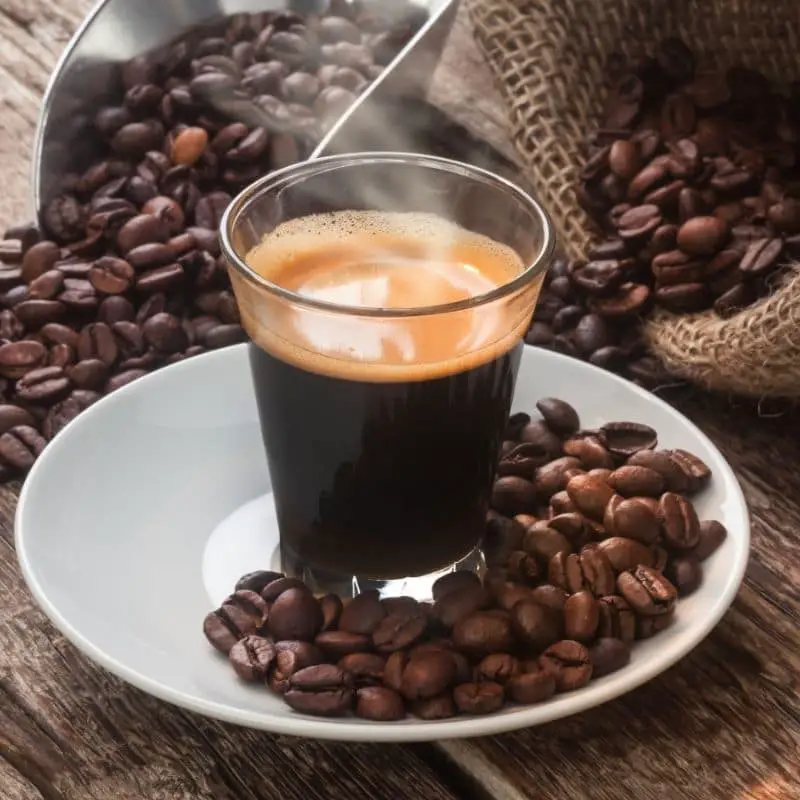
Caffeine Content of Espresso
The caffeine content of this drink is actually lower than a regular cup of black coffee. Not to mention, it’s usually around 60mg compared to 95-100mg in black drip coffee.
If you consume a couple shots, you might feel a boost but just a regular shot of espresso is totally fine.
Is Espresso Healthy
Yes. There are so many health benefits from coffee and this java is high in antioxidants so you should go ahead and grab a shot.
It can reduce your anxiety, improve your memory, and increase your mood. Espresso also can reduce the risk of stroke and type 2 diabetes. With this being said, you should still be aware of consuming too much caffeine.
Brew Your Own Espresso
While an expert Barista and a high-quality machine may produce the perfect shot, you can still create a great one at home.
You can find an inexpensive machine that will do the job or Keurig has one that won’t break the bank. You will just need to use the K-Cups for the Keurig.
Another option is using the Aeropress. It costs less than $40 and it’s easy, small, and durable. I would recommend this one if you are wanting to experiment with this drink at home.
To use the Aeropress:
- Assemble the Aeropress
- Put 2 tablespoons of finely ground beans in
- Add 3.5 ounces of water heated to 195°F (you can experiment with temp)
- Stir and wait 2 minutes
- Plunge it hard (you want good pressure) into your cup
- Enjoy!
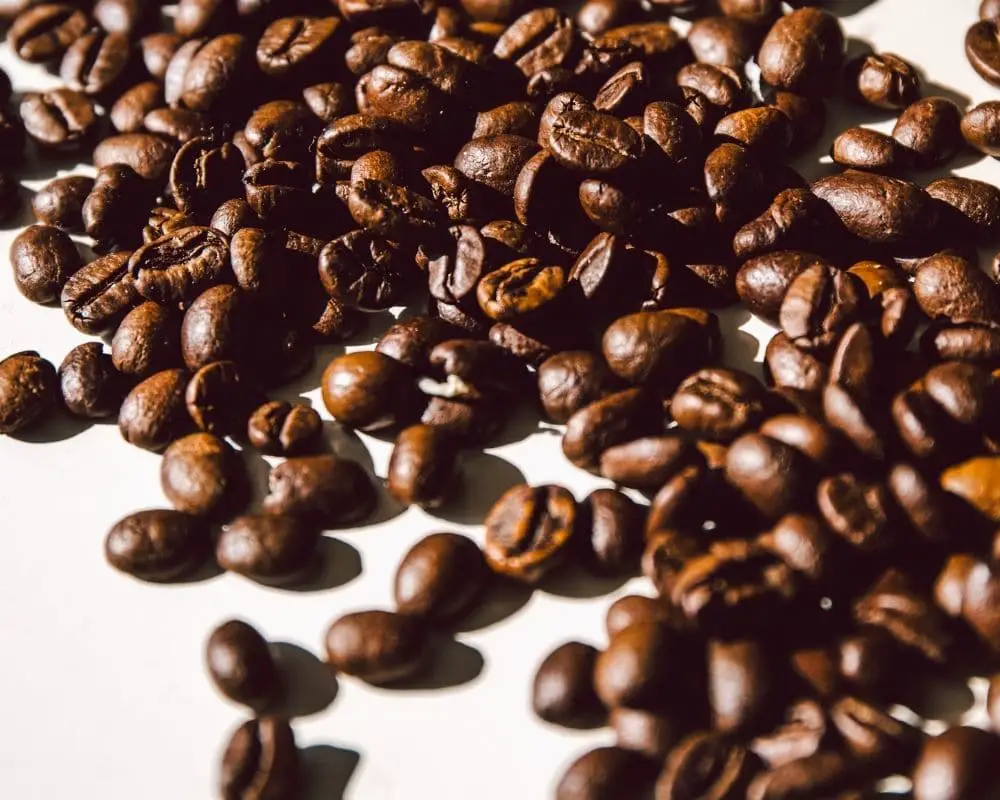
What Type of Beans
Historically, people use darker roasts for espresso, but you can use any type of coffee.
Lifeboost has a great espresso-style bean that’s organic. As a matter of fact, their beans are dark-roasted but it will yield a smooth shot with chocolate, caramel, and fruit notes.
Coffee Bros. has a great medium roast Arabica bean coffee that will give you a berry and nutty-caramel flavor.
When you buy beans for espresso, you will want to make sure to get whole bean. This way you can grind it yourself to ensure total freshness. Ground coffee typically only lasts for 15 minutes after its ground because it degasses rapidly.
Types of Espresso Based Drinks
There are so many drinks that start with a shot of espresso.
First, we will go over the different types of shots.
- Regular– a traditional shot
- Doppio– a double shot
- Lungo– a double shot that is more concentrated
- Ristretto– concentrated espresso that weighs under 1 ounce
- Macchiato– 2 ounces of espresso with a dab of foamed milk
- Cafe Noisette– double shot with an ounce of steamed milk
Types of Espresso Drinks:
- Cappuccino– 2 ounces of espresso on bottom, 2 ounces of steamed milk in the middle, and 2 ounces of foamed milk on top
- Americano– 1 shot topped with hot water
- Breve– 1 shot topped with steamed half and half
- Drip Coffee– 2 ounces of espresso mixed with 3 ounces of hot water
- Mocha– 1 shot, 1 spoon of chocolate syrup, steamed milk, topped with whipped cream
- Affogato– 1-2 spoons of vanilla ice cream with a single shot on top
- Latte– 1 shot with steamed milk on top and frothed milk above that
- Flat White– 1 shot with steamed milk
- Bone Dry Cappuccino– a cappuccino with foam only
- Cafe Au Lait– espresso served in a bowl-shaped cup with steamed or heated milk but no foam
- Cafe Creme– 1 shot and one ounce of heavy cream
- Vienna Coffee-2 shots topped with whipped cream
- Irish Coffee– 1-2 sugar cubes, espresso poured over (mug 3/4 full), 1 shot of Irish whiskey topped with whipped cream
- Glace– a shot of espresso with grated chocolate and ice cream on top
- Espresso Romano– 1-2 shots with a squeeze of lemon juice on top
- Corretto– 1 shot and 1 shot of brandy
- Bicerin– 30 ml of espresso, 2 teaspoons of cocoa powder, 1 teaspoon of sugar, a pinch of cinnamon and milk cream
- Piccolo Latte– 2 shots and steamed milk
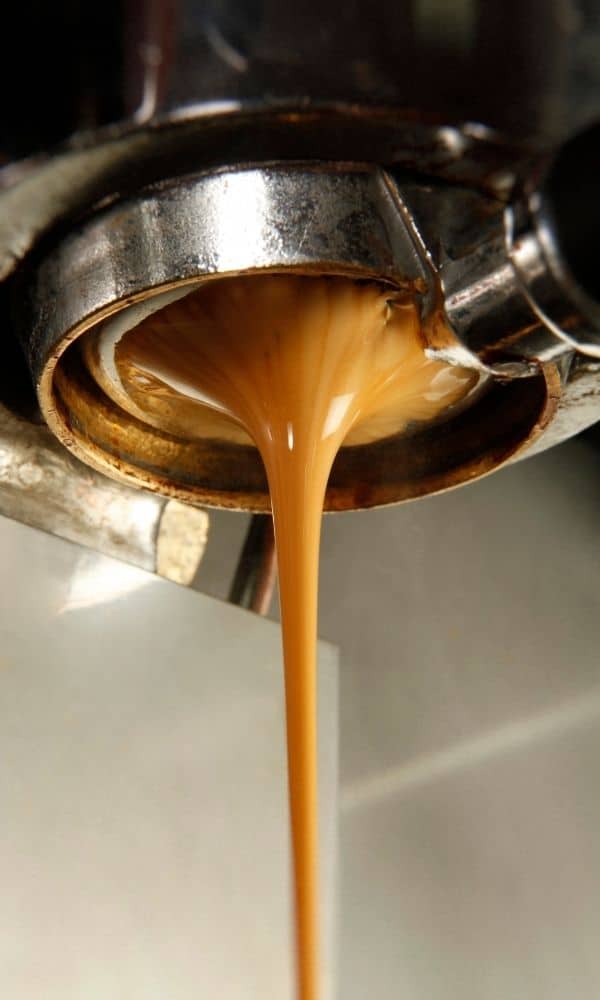
History of This Drink
In 1884, Angelo Moriondo patented a steam-driven coffee beverage machine to make “instantaneous” cups of coffee. In 1906 the first single-shot espresso maker was debuted by Luigi Bezzerra and Desidero Pavoni.
The pressure from the machine wasn’t nearly what we have today, coming in at only 1/5th the pressure. It created a watery, bitter coffee that nobody liked.
But during the next 20 years, machines started to improve and 80 years later, these machines are no longer steamed powered but use intense pumps to generate 7-10 atmospheres of pressure.
In the 90’s Starbucks made cappuccinos very popular and it seems like it took off from there as a commonly ordered drink.
Conclusion
There is a big difference between coffee and espresso. Now that you know, you can experiment with the different types of espresso until you find one that appeals to your taste buds. You can head to your local Barista to get started or try a home brewing machine to venture on your own.
Let me know in the comments below what recipe you love!
See if you can make an espresso in a Keurig here.
